
Guerrilla Girls
Since 1985 the Guerrilla Girls have been reinventing the "F” word-feminism. Still going strong in the 21st century, we're a bunch of anonymous females who take the names of dead women artists as pseudonyms and appear in public wearing gorilla masks. In 19 years we have produced over 100 posters, stickers, books, printed projects, and actions that expose sexism and racism in politics, the art world, film and the culture at large. We use humour to convey information, provoke discussion, and show that feminists can be funny. We wear gorilla masks to focus on the issues rather than our personalities. Dubbing ourselves the conscience of culture, we declare ourselves feminist counterparts to the mostly male tradition of anonymous do-gooders like Robin Hood, Batman, and the Lone Ranger. Our work has been passed around the world by kindred spirits who we are proud to have as supporters. The mystery surrounding our identities has attracted attention. We could be anyone; we are everywhere.
How would you describe your art:
The Guerrilla Girls fight discrimination with facts and humour. We've done over 100 posters, stickers, actions, billboards and books about art, film, abortion, homelessness, rape, war, etc. We attempt to reveal the hypocrisy, conservatism and corruption in cultural and political institutions. Humour helps us present issues in unexpected, intrusive ways. We don't do posters and actions that simply point to something and say "This is bad," as does a lot of political art. We try to use information in a surprising, transgressive manner to prove our case. We believe that some discrimination is conscious and some is unconscious and that we can embarrass some of the perpetrators into changing their ways. This has proved true in the art world: things are better now than they ever have been for women and artists of colour and we have helped effect that change. (We are still condemning the art world for its lack of ethics, tokenism and other bad behaviour.)
Currently working on: We just published the The Guerrilla Girls' Art Museum Activity Book, a humourous condemnation of museum ethics and practices. We're also working on new anti-war posters.
http://www.guerrillagirls.com/
- - -
The following interview took place with Kathe Kollwitz of the Guerrilla Girls, at the end of November, 2004. All images reproduced with permission © Guerrilla Girls
- - -
I recently read an interview with comic book artist Anders Nilson, who stated:
‘I hate it when you go to a good movie and you get sucked in, and when its over you’re just spit back out into the world again, which is left seeming drab and boring … Good art should involve you actively. It should inspire you and make you see the world differently’.
I think that’s part of the key of the Guerrilla Girls’ art: the provocation. It sucks the viewer in, whether by the humour, images, themes or text used, and the audience is never spat back into their old world afterwards – things are left on their minds: action and thoughts are stirred.
How do the Guerrilla Girls manage to balance out this important aesthetic / activist double-act, in order to both attract audience attention and make them take notice?
What comes first, the aesthetic image, or the political impetus?
We usually start with an issue and try to figure out a new way to present it, using facts, humour and visuals to twist it around in the hope that we might just get some people to change their preconceived notions. We do try to leave the viewer with something to think about that they won't forget.
What has the response been to your recent poster campaign: ‘I Decide. You Decide. We Decide, They DON’T decide ’?
Where have the posters been displayed/used? – and to what effect?
We took these posters to the March For Womens' Lives in Washington DC. We also offered them as downloads on the web so our supporters could carry them in Marches around the country. We like the fact that this is a group poster-four women carry it together.
In a past Guerrilla Girls interview, Ana Mendieta stated:
‘That’s another thing we’re fighting for. We think the art that’s in museums & galleries should tell the story of our culture, our real culture, not just the white male part’
Is that part of the reasoning behind publishing the Guerrilla Girls’ History of Art book – to revise history; explore & draw attention to the more complete picture of art?
Absolutely. We want to make sure that women and people of colour never get written out
of history again.
In Christine Battersby’s 1989 text, Gender and Genius, she states:
‘The work of women writers and artists has to be constructed into individual oeuvres and situated in traditions of female creativity. These traditions will be different from the traditions of male achievement. In calling woman a ‘genius’ feminist critics (collectively) reconstruct history from the point of view of their own value scheme’.
Do you think it’s useful to construct individual oeuvres for women’s art, in order to reconstruct history and culture through female values: values formed by deconstructing /destabilising patriarchal norms and traditions; or, is it part of the Guerrilla Girls’ aim that the inclusiveness of the category ‘ART’ itself is what needs to be reconstructed, rather than women’s involvement & relationship to it?
We do think that the male-centric stereotype of the creative genius needs to be jettisoned, along with the masculine words that are used to describe great art-seminal, muscular, potent, etc. A new construct that includes women is slowly forming, but old attitudes die hard. We can't hang up our masks yet.
In the same Guerrilla Girls interview (as mentioned before), Alice Neel stated that ‘art is the expression of experience’.
Is this the reasoning behind specific posters being created: because individual Guerrilla Girls have personally experienced discrimination & been stereotyped by these specific arenas?
Yes. Many of the complaints in our posters come from the experiences of our members, particularly the Advantages poster, Token times and Top Ten Signs that You're an Art World Token.
The 'Birth of Feminism' poster / magazine spread from 2002 is, for me, the Guerrilla Girls most astute comment on mainstream media’s representation of women and women’s history & culture.
In reflection of this piece, how useful is intelligent use of humour and parody as a political tool for the Guerrilla Girls to comment on such issues?
We wouldn't exist without humor and parody! It's another way to do work that the viewer has to complete: the piece doesn't mean anything until you "get it" and think about it. Of course, you can't reach people who don't have a sense of humor that way, but there's plenty of deadly earnest political stuff out there for them.
Since 1985 the Guerrilla Girls have been reinventing the "F” word-feminism. Still going strong in the 21st century, we're a bunch of anonymous females who take the names of dead women artists as pseudonyms and appear in public wearing gorilla masks. In 19 years we have produced over 100 posters, stickers, books, printed projects, and actions that expose sexism and racism in politics, the art world, film and the culture at large. We use humour to convey information, provoke discussion, and show that feminists can be funny. We wear gorilla masks to focus on the issues rather than our personalities. Dubbing ourselves the conscience of culture, we declare ourselves feminist counterparts to the mostly male tradition of anonymous do-gooders like Robin Hood, Batman, and the Lone Ranger. Our work has been passed around the world by kindred spirits who we are proud to have as supporters. The mystery surrounding our identities has attracted attention. We could be anyone; we are everywhere.
How would you describe your art:
The Guerrilla Girls fight discrimination with facts and humour. We've done over 100 posters, stickers, actions, billboards and books about art, film, abortion, homelessness, rape, war, etc. We attempt to reveal the hypocrisy, conservatism and corruption in cultural and political institutions. Humour helps us present issues in unexpected, intrusive ways. We don't do posters and actions that simply point to something and say "This is bad," as does a lot of political art. We try to use information in a surprising, transgressive manner to prove our case. We believe that some discrimination is conscious and some is unconscious and that we can embarrass some of the perpetrators into changing their ways. This has proved true in the art world: things are better now than they ever have been for women and artists of colour and we have helped effect that change. (We are still condemning the art world for its lack of ethics, tokenism and other bad behaviour.)
Currently working on: We just published the The Guerrilla Girls' Art Museum Activity Book, a humourous condemnation of museum ethics and practices. We're also working on new anti-war posters.
http://www.guerrillagirls.com/
- - -
The following interview took place with Kathe Kollwitz of the Guerrilla Girls, at the end of November, 2004. All images reproduced with permission © Guerrilla Girls
- - -
I recently read an interview with comic book artist Anders Nilson, who stated:
‘I hate it when you go to a good movie and you get sucked in, and when its over you’re just spit back out into the world again, which is left seeming drab and boring … Good art should involve you actively. It should inspire you and make you see the world differently’.
I think that’s part of the key of the Guerrilla Girls’ art: the provocation. It sucks the viewer in, whether by the humour, images, themes or text used, and the audience is never spat back into their old world afterwards – things are left on their minds: action and thoughts are stirred.
How do the Guerrilla Girls manage to balance out this important aesthetic / activist double-act, in order to both attract audience attention and make them take notice?
What comes first, the aesthetic image, or the political impetus?
We usually start with an issue and try to figure out a new way to present it, using facts, humour and visuals to twist it around in the hope that we might just get some people to change their preconceived notions. We do try to leave the viewer with something to think about that they won't forget.
What has the response been to your recent poster campaign: ‘I Decide. You Decide. We Decide, They DON’T decide ’?
Where have the posters been displayed/used? – and to what effect?
We took these posters to the March For Womens' Lives in Washington DC. We also offered them as downloads on the web so our supporters could carry them in Marches around the country. We like the fact that this is a group poster-four women carry it together.
In a past Guerrilla Girls interview, Ana Mendieta stated:
‘That’s another thing we’re fighting for. We think the art that’s in museums & galleries should tell the story of our culture, our real culture, not just the white male part’
Is that part of the reasoning behind publishing the Guerrilla Girls’ History of Art book – to revise history; explore & draw attention to the more complete picture of art?
Absolutely. We want to make sure that women and people of colour never get written out
of history again.
In Christine Battersby’s 1989 text, Gender and Genius, she states:
‘The work of women writers and artists has to be constructed into individual oeuvres and situated in traditions of female creativity. These traditions will be different from the traditions of male achievement. In calling woman a ‘genius’ feminist critics (collectively) reconstruct history from the point of view of their own value scheme’.
Do you think it’s useful to construct individual oeuvres for women’s art, in order to reconstruct history and culture through female values: values formed by deconstructing /destabilising patriarchal norms and traditions; or, is it part of the Guerrilla Girls’ aim that the inclusiveness of the category ‘ART’ itself is what needs to be reconstructed, rather than women’s involvement & relationship to it?
We do think that the male-centric stereotype of the creative genius needs to be jettisoned, along with the masculine words that are used to describe great art-seminal, muscular, potent, etc. A new construct that includes women is slowly forming, but old attitudes die hard. We can't hang up our masks yet.
In the same Guerrilla Girls interview (as mentioned before), Alice Neel stated that ‘art is the expression of experience’.
Is this the reasoning behind specific posters being created: because individual Guerrilla Girls have personally experienced discrimination & been stereotyped by these specific arenas?
Yes. Many of the complaints in our posters come from the experiences of our members, particularly the Advantages poster, Token times and Top Ten Signs that You're an Art World Token.
The 'Birth of Feminism' poster / magazine spread from 2002 is, for me, the Guerrilla Girls most astute comment on mainstream media’s representation of women and women’s history & culture.
In reflection of this piece, how useful is intelligent use of humour and parody as a political tool for the Guerrilla Girls to comment on such issues?
We wouldn't exist without humor and parody! It's another way to do work that the viewer has to complete: the piece doesn't mean anything until you "get it" and think about it. Of course, you can't reach people who don't have a sense of humor that way, but there's plenty of deadly earnest political stuff out there for them.
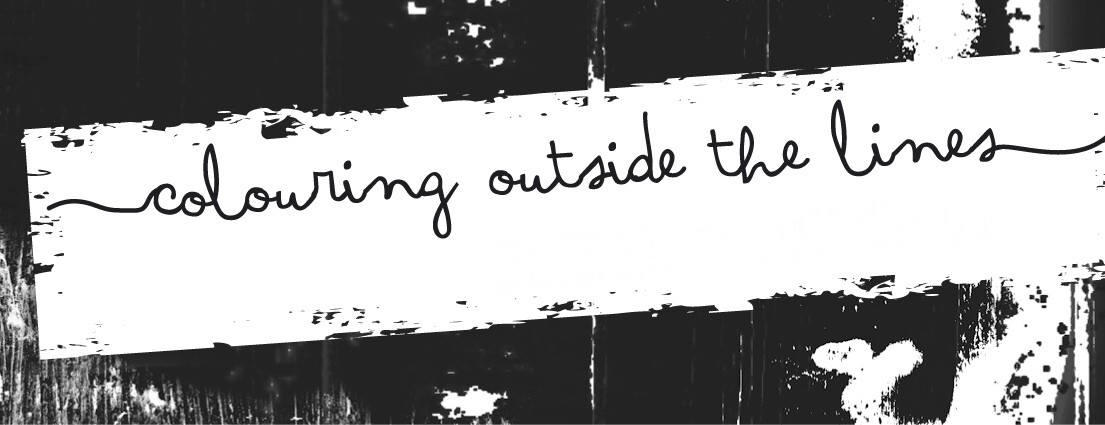





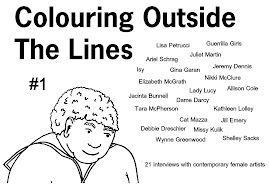
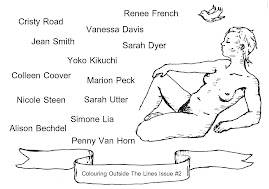

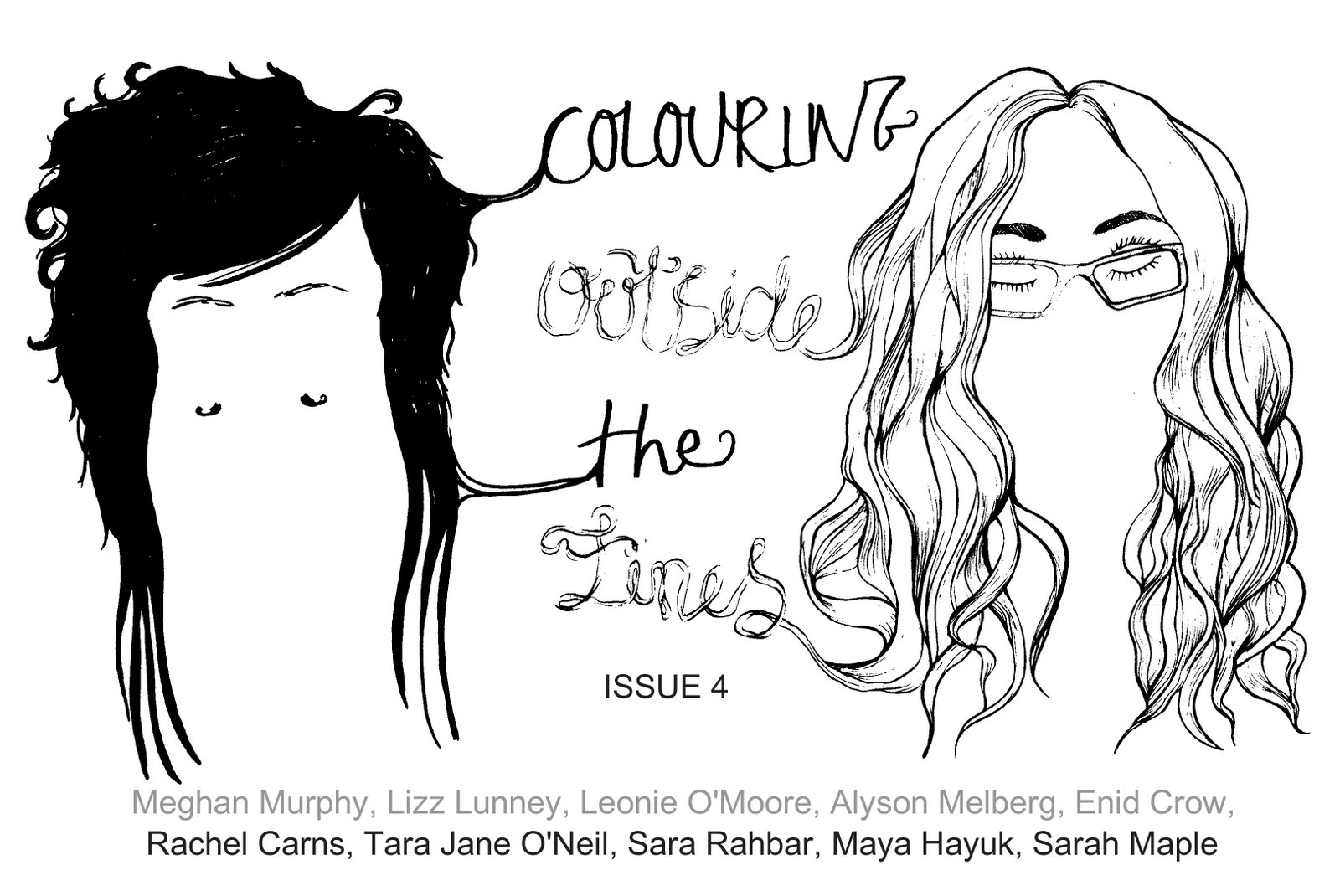

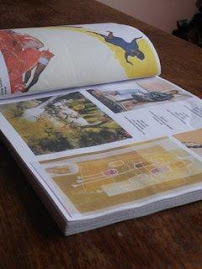



1 comment:
Thanks so much for this great interview! Too Shy to Stop writer Christine Barrett just wrote a piece about Frida Kahlo's visit to Salem College. You can read the full article here.
Post a Comment